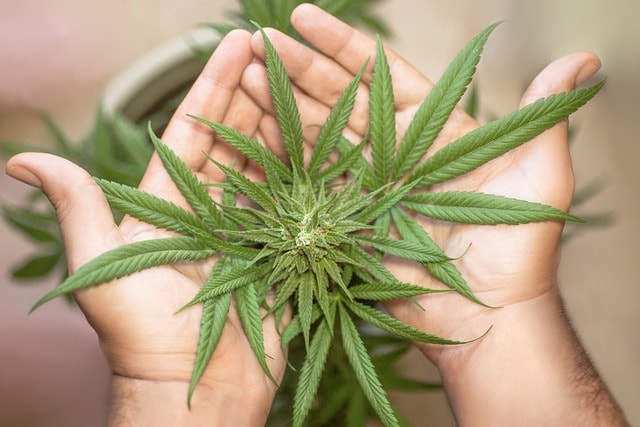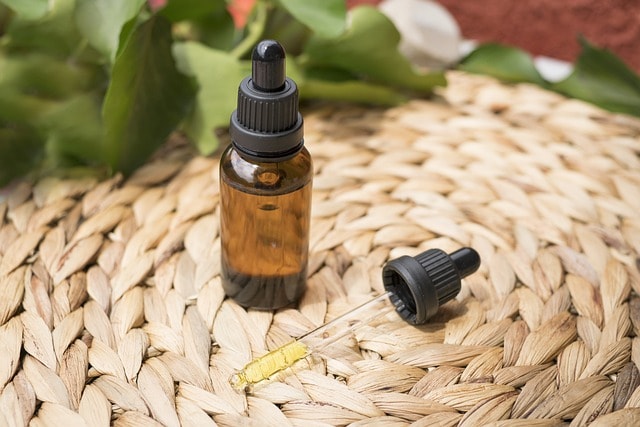Understanding Greenout: Causes, Symptoms, and Tips for Prevention
Cannabis use has become more common as legalization spreads globally, but with increased accessibility comes the need for awareness of potential adverse effects, such as greening out, which is often referred to as a marijuana overdose. This phenomenon occurs when someone consumes too much cannabis, leading to uncomfortable symptoms. In this guide, we’ll explore the causes, symptoms, and prevention strategies to promote safe cannabis use.
What is Greening Out?
Greening out, also referred to as cannabis overdose or THC toxicity, occurs when an individual consumes too much weed, resulting in a combination of physical and psychological symptoms.
Common symptoms: Nausea, dizziness, anxiety, and paranoia.
Causes: Smoking weed excessively, using high-potency cannabis products, or mixing cannabis with other substances, such as alcohol or dangerous substances.
Greening out typically lasts a few hours, but it can feel distressing to those affected. While not life-threatening, it’s crucial to understand the risks to prevent greening.
Causes of Greening Out: Too Much Cannabis
The main cause of greening out is consuming too much marijuana. Marijuana abuse, characterized by overconsumption, can lead to greening out and other adverse effects. This can happen in various scenarios:
Overconsumption: Individuals with low tolerance or first-time users are more likely to experience adverse effects when consuming high doses.
Potent products: Synthetic or highly concentrated forms of cannabis, such as oils or edibles, increase the likelihood of a negative reaction.
Mixing cannabis: Combining cannabis with other drugs or alcohol often intensifies psychological effects and physical discomfort.
Understanding your personal tolerance levels and being cautious with cannabis consumption are essential steps in avoiding greening out.
The Role of THC in Greening Out
THC (tetrahydrocannabinol), the primary psychoactive compound in cannabis, interacts with the endocannabinoid system by binding to CB1 receptors in the brain.
Overload risks: Consuming high levels of THC can overwhelm the central nervous system, leading to symptoms like panic attacks or intense anxiety.
Strain potency: Stronger cannabis strains can cause adverse reactions, especially in young adults or inexperienced users.
Symptoms of greening: These may vary significantly based on THC concentration and user sensitivity.
Taking Too Much Cannabis
Consuming too much cannabis can lead to a range of uncomfortable physical and psychological symptoms, commonly referred to as “greening out.” This phenomenon occurs when the body’s endocannabinoid system is overwhelmed by high levels of THC (tetrahydrocannabinol), the primary psychoactive compound in cannabis responsible for its mind-altering effects.
When an individual consumes too much cannabis, the THC binds to the CB1 receptors in the nervous system, causing an array of symptoms. Physical symptoms of greening out can include dizziness, nausea, vomiting, impaired motor coordination, and delayed reaction time and judgment. Psychological symptoms can range from anxiety and panic attacks to paranoia, hallucinations, and disorientation.
It is essential for users to be aware of their personal thresholds and to consume cannabis responsibly to prevent such episodes. Education on the effects of THC and responsible consumption practices play a crucial role in managing and preventing greening out.
Recognizing the Symptoms of Greening Out
Identifying symptoms early can help alleviate discomfort and reduce the risks associated with greening out.
Physical Symptoms
Dizziness and nausea: Common signs include nausea and vomiting, along with excessive sweating and abdominal pain.
Impaired motor skills: Difficulty with coordination and balance is typical.
Psychological Symptoms
Anxiety disorders: Greening out can trigger or mimic anxiety disorders, resulting in feelings of unease or disorientation.
Panic attacks: Psychological distress often manifests as racing thoughts, paranoia, or mental symptoms like confusion.
Both physical and psychological effects can be alarming, but they typically subside within a few hours.
Managing and Preventing Greening Out
While greening out is uncomfortable, there are strategies to manage and prevent such episodes.
Immediate Strategies for Management
Stay calm: Panicking worsens uncomfortable symptoms. Practice deep breathing exercises to ease anxiety.
Hydrate: Drinking water helps mitigate dehydration, a common factor in cannabis consumers.
Seek medical attention: In severe cases or prolonged distress, don’t hesitate to seek medical attention.
Long-Term Prevention Strategies
Avoid mixing cannabis: Combining cannabis with too much alcohol or other substances raises the risk of greening out.
Monitor consumption: Start with small doses, especially for new or low-tolerance users.
Educate yourself: Learn about cannabis effects and how different products may impact your body.
Health Risks and Treatment Insights
Repeated episodes of greening out may indicate cannabis addiction or marijuana use disorder. Here’s what to consider:
Potential risks: Over time, frequent overconsumption may lead to issues like cannabis use disorder or substance use disorder.
Treatment options: In severe cases, medical detox or group therapy may be recommended to manage dependency.
If you or someone you know experiences recurrent greening out, consult a healthcare provider for personalized advice.
Psychological Symptoms and Mental Health Risks
The psychological symptoms of greening out can be distressing and significantly impact one’s mental state. These symptoms can include anxiety, panic attacks, paranoia, hallucinations, and disorientation. In severe cases, greening out can lead to more serious mental health risks, such as cannabis-induced psychosis.
Cannabis-induced psychosis is a condition where an individual experiences a break from reality, characterized by hallucinations, delusions, and disorganized thinking. This condition can be triggered by consuming high-potency cannabis or by mixing cannabis with other substances.
Recognizing the signs and symptoms of greening out is crucial. If symptoms persist or worsen, it is important to seek medical attention. Health professionals can provide guidance tailored to individual circumstances, including assessing underlying health conditions that may contribute to adverse reactions.
Treatment for Cannabis Use Disorder
Cannabis use disorder is a condition where an individual’s cannabis use interferes with their daily life, causing significant distress and impairment. Treatment for cannabis use disorder typically involves a combination of therapy, counseling, and support groups.
Behavioral therapies, such as cognitive-behavioral therapy (CBT), can help individuals identify and change negative thought patterns and behaviors associated with cannabis use. Medications may be prescribed to manage symptoms of mental health conditions, such as depression and anxiety, that may be contributing to cannabis use.
Family therapy can help loved ones understand and support their loved one’s recovery. A comprehensive treatment plan should be tailored to the individual’s specific needs and goals.
If you or a loved one is struggling with cannabis use disorder or cannabis addiction, seeking professional help is essential. Contact a healthcare provider or a specialized treatment facility, such as SAMHSA’s National Helpline, to get guidance on treatment options and support.
Safe Cannabis Consumption Practices
Safe cannabis use involves understanding your limits and adopting precautionary measures. Some key tips include:
Eat beforehand: Avoid consuming cannabis on an empty stomach to reduce nausea.
Balanced diet: A healthy diet supports the body’s ability to process THC.
Hydration: Regularly drinking water helps manage blood pressure and prevents dehydration.
Know your product: Opt for trusted sources and avoid other dangerous substances.
Conclusion
Greening out, while unpleasant, can be avoided through prevention strategies and informed decision-making. By recognizing symptoms, managing consumption responsibly, and seeking help when necessary, cannabis users can enjoy a safer experience. If greening out persists or causes significant distress, don’t hesitate to seek medical attention or consult a professional about treatment options.
FAQ's
Greening out refers to the unpleasant physical and psychological effects of consuming too much cannabis. Common symptoms include nausea, dizziness, anxiety, and paranoia. Unlike a blackout, which typically involves memory loss and unconsciousness caused by alcohol or other drugs, greening out does not usually lead to memory loss but can result in intense discomfort and disorientation. Greening out is specific to cannabis use, while blackouts are more commonly associated with excessive alcohol consumption.
Greening out episodes usually last a few hours, with symptoms gradually subsiding as the body metabolizes THC. The duration can vary based on factors such as the individual’s tolerance, the amount of cannabis consumed, and whether it was mixed with other substances. While greening out itself is not considered life-threatening, frequent episodes may indicate problematic cannabis use or low tolerance, which could lead to dependency or other health concerns over time.
If you or someone else is greening out, it’s important to stay calm and create a safe, comfortable environment. Encourage the person to drink water, rest in a quiet space, and take slow, deep breaths to alleviate anxiety. Avoid stimulating environments, as they can worsen symptoms. If symptoms such as severe nausea, extreme anxiety, or hallucinations persist, it’s crucial to seek medical attention to ensure the individual’s safety and address any underlying health issues.
Preventing greening out requires responsible cannabis consumption. Start with small doses, especially if you’re new to cannabis or using a highly potent product. Avoid mixing cannabis with alcohol or other substances, as this can increase the likelihood of adverse effects. Stay hydrated, eat a balanced meal before consumption, and educate yourself about the THC potency of the product you’re using. Knowing your personal tolerance levels is key to reducing the risk of overconsumption.








